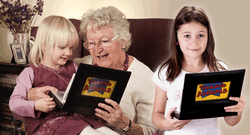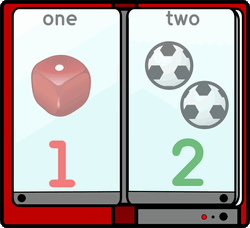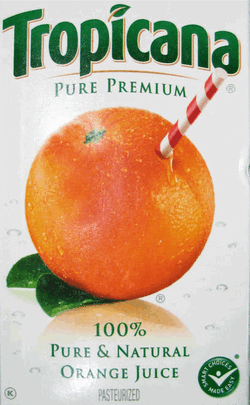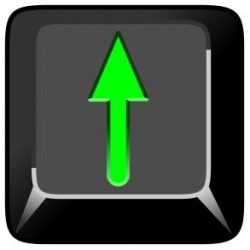The Talking Photograph Album Page
General Information
This page provides over 50 ideas for using a Talking Photograph Album. Talking Photograph Albums are a means of attaching brief messages to images (photographs, pictures, drawings) easily and inexpensively. Talking Photograph Albums (TPAs) can be obtained from a number of retailers and come in a small variety of styles ranging from around £20 to £30 each.
TPAs generally have around 12 or more clear plastic wallets inside which form the pages. Each single page can therefore contain at least two images; one for each side of the page. At the bottom of the page there is some sort of button. When this is pressed, the TPA plays back a pre-recorded message that has been associated with the image. Typically messages have a time limit of around ten seconds each but some of the better TPAs can take longer messages.
To record a message and associate it with a particular picture, a recording button is provided. This has to be depressed at the same time as the button at the bottom of the required page in order to record an appropriate message into the devices in-built microphone. The improved quality versions use a removable SD card and, thus, can be used in conjunction with the computer and load audio from the PC if desired.
Typically, TPAs allow for one photograph per page but it is possible to find them with wallets to allow for two or more photographs to be displayed on a page. The ideas below are all for the single photo/image per page type of album but it is easy to adapt them for different formats.
Any image can be used:
- a cutting from a magazine or newspaper;
- A photograph;
- a printout from a computer;
- a hand-drawn symbol/image;
- a wrapper from a product;
- other.
Some TPAs have earphone sockets. This means that the output can be fed to an amplifier for the whole class to hear or, alternatively, to a set of headphones for only a single individual to hear. Such TPAs tend to be a little more expensive than the standard variety but the extra facilities they offer are worth the additional small expense.
Please note that the images used below simply to illustrate the concepts involved and do not represent any one particular TPA style. They do not contain images of the recording and playback buttons. Typically, TPAs are not ring binder formats and, thus, the ring binders illustrated in the pictures should not be seen as an factual illustration of the product. TPAs do not usually have the ability to add extra pages.
Learners who will use a TPA have to have:
- the visual acuity to locate the speech button;
- the physical ability to target the speech button on any page;
- the cognitive level sufficient to comprehend the use of a button-based system
Of course, Learners can still benefit, even if they do NOT have the above skills, providing that another person (staff member) is able to open pages and press buttons on the Learner's behalf whilst including the Learner as much as is possible in the process.
As far as I am aware, presently there is no switch operated version of the TPA. It is what it is: a simple push button single messaging system. It is NOT suitable for all Learners. Again, as far as I am aware, there is also no system that operates by selecting anywhere from within the page; the Learner has to be able to locate and target the speech button unless a Voice Pen is used (See the V-Album page)
Where can I obtain Talking Photo Albums?
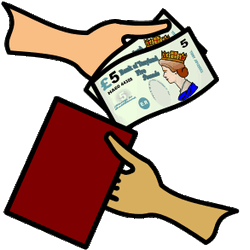
A number of suppliers offer TPAs in the UK. Just a couple are listed below in alphabetical order. Clicking on the company name will take you to their website.
Ability World
Talking Products
If you are a supplier of TPAs in the UK or another country and would like me to add your company name to this list, please contact me.
Download PowerPoint Examples

I have created a PowerPoint which demonstrates each of the examples on this and other pages. When the PowerPoint is run, each slide will speak if you click on the pages/symbols and, when you click off the pages, the animation will run before proceeding to the next slide. If you encounter any problems, please contact me. The PowerPoint may be used for training purpose only. Other commercial use is expressly forbidden.
To download the PowerPoint, please click on the symbol to the right.
If the PowerPoint does not download, the link has not yet been set. Please return and try again later.
If you think any idea is missing from the list below, why not contact me and let me know so that I can add it for all to share?
Click on any image below to see larger view.
Click on any image below to see larger view.
1. Simple Communication System
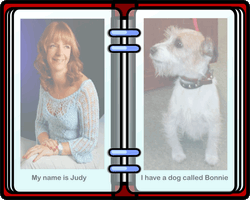
Building an accessible communication system for any individual is not a straightforward task. It may be approached in many ways. One method is to use a photograph album to provide simple single message pages like the one depicted. In it, the Learner is able to make simple requests and statements about aspects of daily life. For example, there could be pages detailing:
- personal details ("My name is Judy");
- favourite drinks ( "I would like a cup of tea, please);
- favourite foods ("I would like a BigMack with fries please")
- specific needs ("I need the bathroom");
- yes and no responses;
- pictures of family ("Mum", "Dad" ...);
- pet names ("I have a dog called Bonnie")
2. Choice system
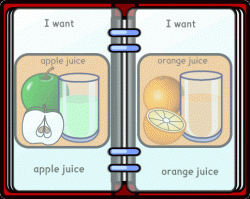
Where an individual is required to make regular (and fairly consistent) choices throughout a day, a TPA can be prepared which provides a means of the Learner making a choice at any time. The pages may be choices of just two items, as shown, or be more complex and have two (or more) items on a page depending on the type of TPA in use..
Choices could be: what to have for breakfast (cornflakes or branflakes), what colour shirt or dress to wear (red or blue), what drink to have (apple juice or orange juice), what game to play (space invaders or frogger), what to have for dinner (Jacket potato or spaghetti), where to go for a meal (KFC or McDonald's) ...
3. Shopping List
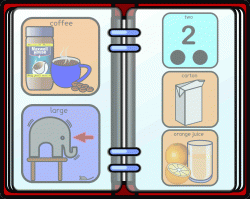
A talking shopping list can be a very useful thing to have. The list can be set out with one item one each page. If symbol cards are prepared in advance, they can be laminated to a size that that fits snugly into the wallet of the album. In this way, it will be possible to remove and set up a new list quickly for every outing, building a laminated symbols bank as time progresses. As recording new messages is very simple, it will be no problem re-recording shopping items for the list.
The Learner is tasked to access the list, listen to what is required, locate the items in the store, and purchase them; perhaps all using the same photo album for both listing and purchase vocabulary!
Another use, is to ask the Learner to remind Mum or Dad what needs to be purchased using the album during the trip to the shops.
The image details a more complex set up using more than one symbol to illustrate a single item of shopiing on some pages. For example, a large jar of coffee is required... the massage says 'Large jar of coffee'. On the second page, the symbols are used to illustrate the concept of two cartons of orange juice and the message would also reflect this specific need
The Shopping list does not have to be as complex as this of course; it could simply be a single image of a jar of coffee cut from a magazine together with the label cut from an old empty carton of orange juice. Matching the label to a product in a supermarket is a good way of assessing such skills and teaching the conceots of 'same' and 'different'.
The Learner is tasked to access the list, listen to what is required, locate the items in the store, and purchase them; perhaps all using the same photo album for both listing and purchase vocabulary!
Another use, is to ask the Learner to remind Mum or Dad what needs to be purchased using the album during the trip to the shops.
The image details a more complex set up using more than one symbol to illustrate a single item of shopiing on some pages. For example, a large jar of coffee is required... the massage says 'Large jar of coffee'. On the second page, the symbols are used to illustrate the concept of two cartons of orange juice and the message would also reflect this specific need
The Shopping list does not have to be as complex as this of course; it could simply be a single image of a jar of coffee cut from a magazine together with the label cut from an old empty carton of orange juice. Matching the label to a product in a supermarket is a good way of assessing such skills and teaching the conceots of 'same' and 'different'.
4. Timetable
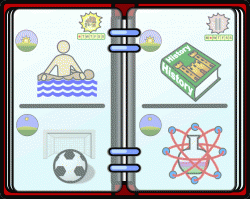
A talking school or college timetable is a good use of a TPA. Each page can reference a whole day or just part of the day. For example: the left hand page could detail the morning's activities and the right hand, the afternoon's.
The illustration shows a simple day of just two sessions. each page details a day's timetable. The Learner can state both morning or afternoon activities ('Morning swimming,. Afternoon Sport'). A single image could provide all the information of just part of it depending on the cognitive abilities of the Learner.
Pictures might include digital camera images of specific stafff members, room views (if the same room is always used) and the Learner engaged in an activity within the subject area as well as timetable symbols and parts of the day.
The illustration shows a simple day of just two sessions. each page details a day's timetable. The Learner can state both morning or afternoon activities ('Morning swimming,. Afternoon Sport'). A single image could provide all the information of just part of it depending on the cognitive abilities of the Learner.
Pictures might include digital camera images of specific stafff members, room views (if the same room is always used) and the Learner engaged in an activity within the subject area as well as timetable symbols and parts of the day.
5. Home School Diary
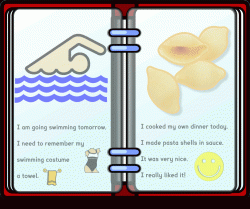
Where a Learner is included in the home school diary process (and if not, why not?) then a TPA can be a good way of adding that extra dimension. Indeed, it may be the added dimensions that make Learner inclusion in the home school diary system possible,
It may work in the following way:
The Learner is tasked to give his/her parents/carers the message from the diary each day. Parents are instructed NOT to prompt the Learner for (at least) the first hour at home to allow time for the Learner to perform the alloted task independently. After this time has elapsed with no sign of the Learner using the diary, then the parents can prompt, "Anything special happen at school today? Do you need anything special for tomorrow?" If the prompts do not motivate the Learner, then and only then, should the parents consult the diary directly. Indeed, it would be best if they only consult the diary directy after the Learner has gone to bed. In the morning, parents could ask the Learner why s/he did not tell them the message in the diary: thus reinforcing its importance and the Learner's central role in the process.
The diary is a two way process: from school to home and from home to school. The parents may even have a second diary which deatils home events although this may be too complex and confusing a system for some Learners. When a diary come from home to school, the process should be reversed, with the staff allowing time for the Learner to pass messages independently within class.
The TPA could also be used as a limited form of a standard diary with each page representing one day of the week, for example. Upand coming special events could therefore be illustrated (On Thursday it's the school party and disco ...) such that individuals can begin to learn (simple and concrete) abstract concepts of future and past events and move away from being fixed in the here and now.
It may work in the following way:
The Learner is tasked to give his/her parents/carers the message from the diary each day. Parents are instructed NOT to prompt the Learner for (at least) the first hour at home to allow time for the Learner to perform the alloted task independently. After this time has elapsed with no sign of the Learner using the diary, then the parents can prompt, "Anything special happen at school today? Do you need anything special for tomorrow?" If the prompts do not motivate the Learner, then and only then, should the parents consult the diary directly. Indeed, it would be best if they only consult the diary directy after the Learner has gone to bed. In the morning, parents could ask the Learner why s/he did not tell them the message in the diary: thus reinforcing its importance and the Learner's central role in the process.
The diary is a two way process: from school to home and from home to school. The parents may even have a second diary which deatils home events although this may be too complex and confusing a system for some Learners. When a diary come from home to school, the process should be reversed, with the staff allowing time for the Learner to pass messages independently within class.
The TPA could also be used as a limited form of a standard diary with each page representing one day of the week, for example. Upand coming special events could therefore be illustrated (On Thursday it's the school party and disco ...) such that individuals can begin to learn (simple and concrete) abstract concepts of future and past events and move away from being fixed in the here and now.
6. Story Book
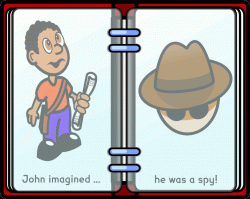
A fairly obvious use of a Talking Albums is for talking stories. These could be scanned pages from a real story book or a story that you have create yourself or, better still, one that the Learner has created him or herself. Once you start exploring the possibilities of sound effects within stories, you are moving towards a 'sensory story' type of approach (see below). A whole library of talking tales could be produced over time which would make text accessible to a lot more Learners!
There are a number of comics on the market which can easily be cut up and scanned. Then each section of the cartoon strip can form a page in the album (perhaps two to a page?). Now the cartoon is brought to life and made accessible.
7. Bag Book
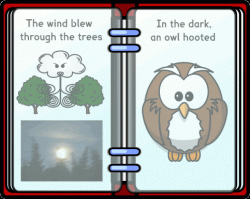
Bag Books are sensory stories. Typically staff have to manipulate many resources to make the story accessible for every Learner. The TPA can hold the details of the story (story line) as well as all the sound effects that can be played through TPA perhaps on the opposing page to the story line. Those TPAs with ear phone sockets are much better suited to this approach as they can be linked to an amplifier and played to the entire class. Any number of TPA Bag Books can be prepared and stored together with the resources that make the story accessible for the Learners.
In the story in the illustration, the teacher would read the story line out loud and then access the wind symbol to produce the necessary sound effect of the wind in the trees. On the next page the teacher reads the text and then can produce the sound of owls hooting. Thus, even if a staff member were absent, another person could provide the resource in an almost identical identical manner every time.
If the Learner is able to manipulate the TPA him/herself then s/he could read the story book and produce the sound effects over and over.
In the story in the illustration, the teacher would read the story line out loud and then access the wind symbol to produce the necessary sound effect of the wind in the trees. On the next page the teacher reads the text and then can produce the sound of owls hooting. Thus, even if a staff member were absent, another person could provide the resource in an almost identical identical manner every time.
If the Learner is able to manipulate the TPA him/herself then s/he could read the story book and produce the sound effects over and over.
8. Record Of Achievement
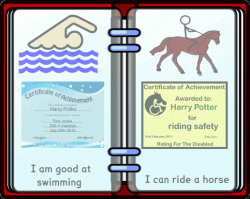
Most establishments have some way of recording and celebrating Learner achievements. A useful addition to the process is the talking Record of Achievement which may make the system more inclusive for some Learners. Individual pages can be set out with individual achievements. Scans of certificates can be imported into the sofware and sound files added to bring them to life. Pages can be as simple of as complex as the Learner's needs and abilities direct.
9. Instruction Manual
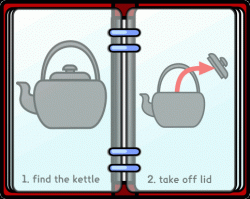
Instruction manuals are 'task recipes' with each page detailing an individual step in accomplishing a specific task. There may be a manual for filling a kettle (as in the illustration), for example. This manual might be referenced in another manual (e.g. making a cup of tea) rather than repeating the steps in every manual requiring the process.
When the Learner accesses the pages, s/he can see the process visually represented and, by using the buttons, can hear clear instructions for each stage of the process. For those that are literate, there should also be a written instruction provided. In this way, the manuals can be used both with and without the sound files and provide an extremely useful resource.
Such manuals can be used in, at least, three ways:
- they can be used by a Learner to provide the steps in a self-help task list;
- they can be used by the Learner to give a set of instructions to an enabler who will carry out the processes on the Learner's behalf;
- they can be used by the Learner to tell another Learner what to do to complete a task.
10. Diary / Memory book
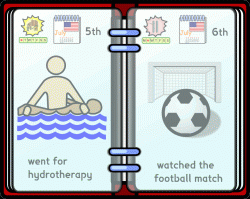
A TPA can be set up as a talking diary with an entry per page. A single picture might speak the entire entry for the day including the current date. Alternatively, separate parts of a day could be recorded on separate pages.
While a Memory Book is a form of 'diary' that can assist the Learner with the concept of time, it is not a diary as such. A Memory Book is NOT:
- a scrapbook full of old memories such as pictures of childhood or
momentous moments of an individual life.
- a symbolic timetable of an indivual's week.
- a home/school diary.
- a written log of a Learner's day.
Items (see Memory Book pages on this web site) are pasted into the Memory Book to represent each session or part of a Learner's day.
Once begun, it becomes possible for the Learner to 'look back' at what happened within a particular period of time.
A Memory Book can utilise an existing (sturdy) diary or can be created from a ring binder with blank pages divided into time periods. When Items have been attached to pages, the Memory Book tends to thicken and so fixed books (such as diaries) are not necessarily as useful as loose leaf books (such as ring binders) which allow for pages to grow in stature! However, it is possible to use existing diaries.
Memory Books are suitable for children, young people, adults and the elderly. Anyone who has severe cognitive deficits for whatever reason may benefit from their use. Thus, people with dementia may benefit as equally as the child experiencing PMLD.
11. Menu
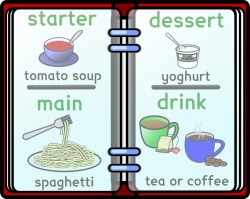
Talking table top menus can be simple (as in the illustration) or more complex; offering choices of items for each course. The Learner, by accessing the menu can not only discover what is available but (if only oe item per page) also make a choice of items (tea or coffee). As menus tend to repeated by most establishments over a few weeks, so the menus so produced can be re-used over and over. The menus for a particular meal can be readied in advanced and then stored for the time when that particular menu is available once again. However, if menus were never quite the same, symbols could be lamianted and cut to a size that perfectly fits the wallet. Eventually, a complete range of menu item symbols would be produced which could be re-used over and over. Setting up the recorded sounds is a simple matter although doing it for twenty or more menus would take some time.
Instead of symbols, actual photographs of foods produced could be taken. If the items on the menu require payment then, each could be accompanied, on the facing page, by a symbol or a photograph of the coins required to purchase that particular item.
12. Communication Passport
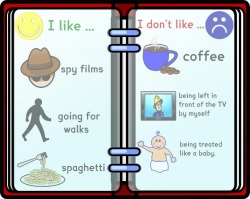
A Communication Passport is a guide to assist people communicate with a non-verbal individual. The idea was developed by Sally Millar (Call Scotland) in 1991. A passport should contain (positive) personal information about the person’s needs, such as the way in which they communicate (and, therefore, how best to communicate with them), likes and dislikes, medical condition, and other important personal information, etc. Typically, a communication passport is a method of sharing information about the individual that has been compiled by people that knows him/her very well. Best practice dictates that the individual is actively involved in the process. The passport should belong to the individual as it contains information that is personal to them. It should not belong to other family members or staff working with the individual. Communication passports should be reviewed and updated regularly. As an individual matures so personal details may change. For example: typically, we don't always like all the same things as we did a year ago. It is important that passports present a positive image of an individual and not a list of problems and how best to deal with them! To find out more about communication passports go here.
Creating a simple communication passport is relatively easy using a TPA. Each Page in the album might detail a different aspect of personal information.
13. Mathematics Tables
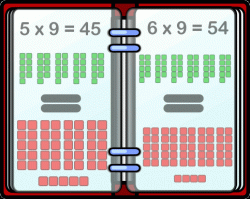
Numeracy support can be provided in many wyas through the use of TPAs. One idea is to use the albums to provided a visual and auditory record of the mathematical tables as in the image left.
14. Personal Information
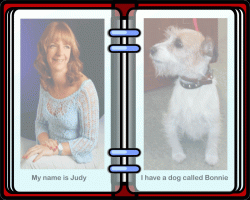
A Personal Information book is not the same thing as a Communication Passport (see above on this page). A personal information book simply contains information about the Learner that can be used in conversation or to respond in oficial situations (like a visit to a hospital). It may therefore contain things like full name, date of birth, age, weight, blood group, next of kin, etc.
Personal information books are the property of the Learner. Ideally, they should be constructed with the agreement and involvement of the individual and not simply presented to him/her as the work of others.
Personal information books are the property of the Learner. Ideally, they should be constructed with the agreement and involvement of the individual and not simply presented to him/her as the work of others.
15. Recipe
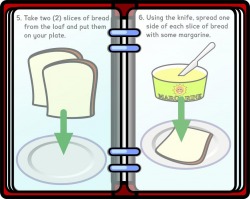
It is possible to create TPAs that give instructions for preparing food. It might be a fairly simple process such as making a cheese sandwich (as illustrated) or something more complex like making a gateaux. Simple ideas include:
- making a sandwich;
- making a drink;
- making soup from a tin;
- making X on toast (cheese, beans, egg, etc)
Every page can detail each step in the process. Numeracy is pacticed in weighing out or selecting certain quantities of materials for the recipe.
Rather than using symbols, as in the illustration, it might be better practice to use digital photgraphs of an actual Learner making an actual sandwich! Another Learner might be involved in taking the pictures. Once printed, they can be cut to size to fit into the wallet of the album. Involving the Learners in the process is not only good practice but also eases the burden on staff in creating resources. Learners are thus creating resources for future Learners to use. Learners can be proud of the finished resource. It may also be used as evidence for an award scheme!
- making a sandwich;
- making a drink;
- making soup from a tin;
- making X on toast (cheese, beans, egg, etc)
Every page can detail each step in the process. Numeracy is pacticed in weighing out or selecting certain quantities of materials for the recipe.
Rather than using symbols, as in the illustration, it might be better practice to use digital photgraphs of an actual Learner making an actual sandwich! Another Learner might be involved in taking the pictures. Once printed, they can be cut to size to fit into the wallet of the album. Involving the Learners in the process is not only good practice but also eases the burden on staff in creating resources. Learners are thus creating resources for future Learners to use. Learners can be proud of the finished resource. It may also be used as evidence for an award scheme!
16. Sing parts of a song
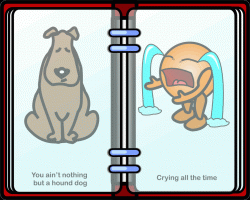
Using commercial software such as Wavepad it is possible to cut any song up into sections and save them as individual files. These files can be attached to pictures within a TPA. The Learner can now sing a whole song by moving through the TPA page by page or simply choose to sing a part of a song.
Such an activity is very motivating for many Learners. They can sing along with their peers, lead a sing-song, perform at a school function, or just sing when the feeling motivates them. Singing parts of a song is more typical human beaviour than singing a whole song all the way through. Ask yourself, when you last sang a song, did you sing it all or just part of it?
17. Recite parts of nursery rhyme
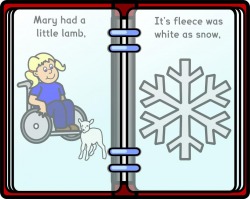
A nursery rhyme can be stored into a TPA line by line. If it the rhyme has been recorded as a song, you can use the above technique. The child can then recite the rhyme a little at a time instead of all in one go. Many nursery rhymes are illustrated on the web. If such images are captured, they can be printed and cut to size to fit the wallet of the album. Accessing the speech button on the page will cause the section of the nursery rhyme to be spoken.
Remember, it is NOT necessary to have a picture of Mary and the lamb for 'Mary had a little lamb'. A picture of a Learner can be placed along with a separate picture of a lamb into a single page of the TPA; the two pictures now forming a sinlge entity.
Nursery rhymes can be used to teach symbol referent corrrespondence. For example, in the illustration, the symbol for snow has been used to illustrate the second line of Mary had a little lamb.
Remember, it is NOT necessary to have a picture of Mary and the lamb for 'Mary had a little lamb'. A picture of a Learner can be placed along with a separate picture of a lamb into a single page of the TPA; the two pictures now forming a sinlge entity.
Nursery rhymes can be used to teach symbol referent corrrespondence. For example, in the illustration, the symbol for snow has been used to illustrate the second line of Mary had a little lamb.
18. Portable Jukebox
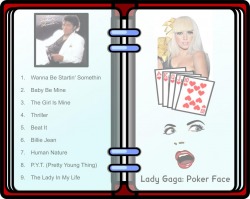
A really great idea for using the photo album is to create a pesonal jukebox! There are several ways to do this.
The left page in the illustration depicts Michael Jackson's thriller album. Activating the page's button could state the name of the album and the artist,
Activating a button on another page could play the whole or part of a track (some TPAs can cope with more than ten seconds of recording). The right page in the illustration depicts this approach. This page plays a single track. The track in question is Lady Gaga's 'Poker Face'.
Putting music into a TPA is similar in legality to putting music into an portable mp3 player: you should have purchased a separate copy of the music for personal use for each item produced.
Where a Learner uses the music pages inappropriately (for example, in the middle of a class when the teacher is speaking), it is NOT considered good practice to remove the photo album from the Learner. Rather, address the issue directly. The Learner should be told that it is not appropriate to sing in class and that it must not happen again. If any other student began singing in class we would not remove their larynx! We would simply warn them that it wasn't the right time to do this. Removing a means of alternative communication for a person with a communication impairment is NOT good practice! Removing communication systems should be the very last measure taken.
The left page in the illustration depicts Michael Jackson's thriller album. Activating the page's button could state the name of the album and the artist,
Activating a button on another page could play the whole or part of a track (some TPAs can cope with more than ten seconds of recording). The right page in the illustration depicts this approach. This page plays a single track. The track in question is Lady Gaga's 'Poker Face'.
Putting music into a TPA is similar in legality to putting music into an portable mp3 player: you should have purchased a separate copy of the music for personal use for each item produced.
Where a Learner uses the music pages inappropriately (for example, in the middle of a class when the teacher is speaking), it is NOT considered good practice to remove the photo album from the Learner. Rather, address the issue directly. The Learner should be told that it is not appropriate to sing in class and that it must not happen again. If any other student began singing in class we would not remove their larynx! We would simply warn them that it wasn't the right time to do this. Removing a means of alternative communication for a person with a communication impairment is NOT good practice! Removing communication systems should be the very last measure taken.
19. Talking Text Book
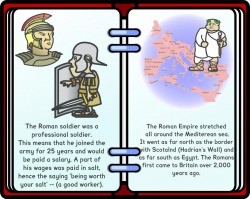
Talking text books are a great idea for schools. Get the kids to produce them as course work and then they can be used to support studies or as revision documents for examinations. Documents so produced can be printed as many times as you like to produce as many text boks as are wanted. The books serve equally well both with and without the TPA but are very inclusive for those without literacy skills.
Build a library of talking texts!
Please Note: As there is greater use of text, such books will probably have to be produced withbetter quality TPAs than the ten second standard recording variety. See suppliers at the top of this page.
20. Say Your Prayers
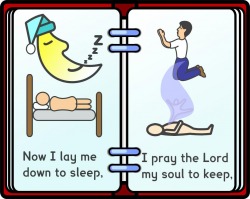
By storing prayers into the TPA, not only can the chid say his/her prayers at night or in class but, also, they can lead an assembly prayer or speak in church. It's also a great way to teach childen prayers!
21. Hymn Book
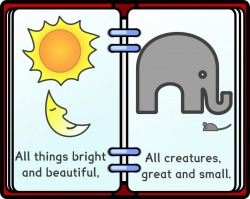
As with the prayer book, the TPA can be made into a hymn book so that a child can sing in church, lead an assembly in song,or simply sing to him/herself. Each page can be a separate hymn or a hymn can be broken down into parts and ech page can be a section of the hymn.
22. Carol Singer
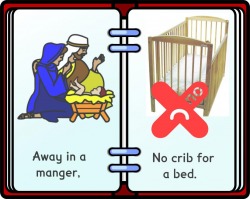
As a variation on the hymn book approach, why not create a book of Christmas Carols? The Learner can now go carol singing, lead an assembly, perform at a school function, sing in church ...
23. Lines for special occasions
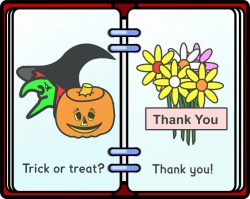
There are things that occur only once a year but nevertheless are extremely motivating. A book full of appropriate lines for such occasions can be very useful. The best way to produce such an album is to get the children to compile their own over the course of the year. They will learn as they go and the album can be used over and over again in each following year. It's a great way to learn about each occasion and also a great way to learn symbol associations.
24. Performing Arts
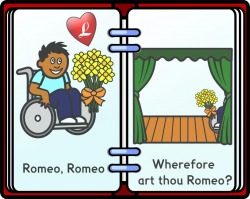
Most chilldren love performing and most educational establishments put on regular performances. Having a TPA that deals with the lines in the play, or the songs in a performance, or a monologue, or ... is a great way of making every performance more inclusive. The benefit is that the performer can never forget their lines!
The children themselves can produce the album as a part of their preparation for the performance. Being actively involved in the preparation is a great way of learning and ensuring that you know what to do on the night!
Those TPAs with earphone sockets that can be attached to amplifiers are better suited to this purpose.
25. Medical Information
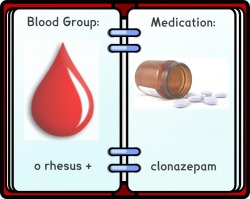
it may be important to keep all medical information separate but accessible. A medical information journal album can be a handy way of relaying such information.
26. Joke Book
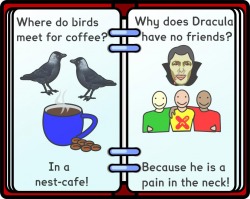
Kids love telling jokes so a fun idea is to create a joke book full of jokes suitable for the Learner. The opening part of the joke could occupy the left hand page and the punch line, the right hand or, as in the illustration, a whole joke can occupy as single page witha suitable gap between opening and punch line (more jokes that way!).
If you want to create a book where the punchline is not visible so that listeners cannot see it before the joke has been told, place the opener on the right hand page and then turn the page and put the punch line on the left hand page. The opening part of the joke is spoken then, the page is turned and the punch line revealed! Alternatively, don't write the punch line down. Rather, simply store it on the page so that the Learner can access it but the listener cannot read it. Have fun!
If you want to create a book where the punchline is not visible so that listeners cannot see it before the joke has been told, place the opener on the right hand page and then turn the page and put the punch line on the left hand page. The opening part of the joke is spoken then, the page is turned and the punch line revealed! Alternatively, don't write the punch line down. Rather, simply store it on the page so that the Learner can access it but the listener cannot read it. Have fun!
27. Game On
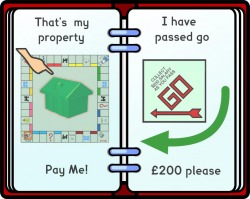
It is is possible to create a TPA with words and phrases suited to individual games. for example, in the game of Monopoly you may need to say, "That's my property. Pay me!" or "I have passed go. £200 please." each of these phrase could be programmed on to a single page or the whole set of phrases, for a particular game, made available across a double page spread.
28. Hobby Horse
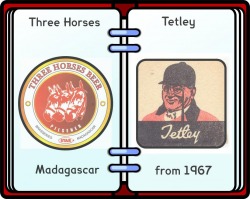
For the individual that has a hobby, it is possible to use a TPA to great effect. If the individual collects things that could be displayed in the album itself, a suitable message could be recorded tro speak some information about it. For example, Where and when it ws found, it's date, or it's value ... etc. Even if the hobby involves things that cannot be put into an album, digital images could be taken and these displayed instead.
29. Order Favourites
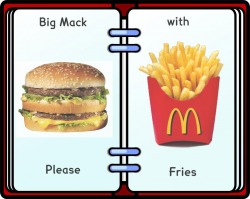
It may be that the Learner frequents a particular eating establishment quite often. If they have a photographic menu that can be obtained, it could be scanned and the resulting digital images sound enabled in either Voice Symbol or Voice Ink. If a photographic menu is not available, pictures from the web will do instead or you could use symbols for each food or drink item. There may also be scope for incorporating the cost of the item into the album. Such albums can be very handy for use in fast food restaurants (for example) to order favouite foods or to let another know what you want.
It may be that one double page sread could be set up to order from McDonalds while another could be set up to order from KFC and yet another to order from ...
30. Translation Talk
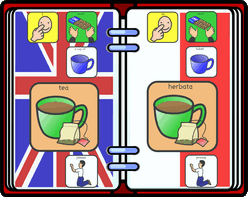
Where an individual is living in a dual language environment, maybe speaking English at school and Polish at home then, it is possible to set up an album to do any of the ideas suggested here in dual languages.
Everyday phrases could be available in two languages or a 'themed' communication system could be developed which will work across both speech systems. The illustration shows such a set up in English and Polish.
31. Sign and symbol
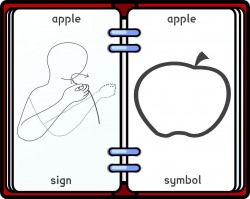
A TPA can be used as a teaching aid for signs and symbols. The sign could occupy one page and the symbol the adjacent page or both could be on the same page. the illustartion shows the Makaton sign and symbol system. Although Makaton sign is depicted alongside Makaton symbols, it could equally well be used with any available symbol set.
32. Talking Treasure Hunt
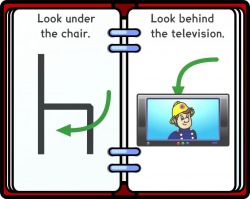
A fun thing to do, especially if there is treasure in the form of some motivating reward at the end, is to use the TPA as a talking treasure hunt. This is also a great way to teach symbol referrent associations. The child learning to associate the symbol with a real object in his/her environment. Apart from the learning of objects in the environment, this is also a great way to gain spatial awareness and to learn prepositional concepts and their symbols (on, in, under, behind ...)
Of course, the pages cannot fill theTPA because they have to be placed in order as clues to the next location around the house or school or environment. Thus, enough albums are necessary to have one placed at each location to provide the next clue! Alternatively, only one could be used, if the Learner has to collect something from each location to prove that s/he has been there and NOT just turned to the last page of the TPA to win!
TIP: Do not number each location/cue because they can be used in a variety of future treasure hunts in a different order. If you have a hundred locations encoded, then each treasure hunt may use any twenty of them, for example. Thus, you can produce an almost instant new treasure hunt every time! Simly choose pages at random and work backwards, in reverse order from the treasure location.
For a more advanced treasure hunt, cryptic clues can be used.
Of course, the pages cannot fill theTPA because they have to be placed in order as clues to the next location around the house or school or environment. Thus, enough albums are necessary to have one placed at each location to provide the next clue! Alternatively, only one could be used, if the Learner has to collect something from each location to prove that s/he has been there and NOT just turned to the last page of the TPA to win!
TIP: Do not number each location/cue because they can be used in a variety of future treasure hunts in a different order. If you have a hundred locations encoded, then each treasure hunt may use any twenty of them, for example. Thus, you can produce an almost instant new treasure hunt every time! Simly choose pages at random and work backwards, in reverse order from the treasure location.
For a more advanced treasure hunt, cryptic clues can be used.
33. Errand Boy
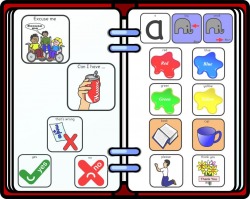
Giving the Learner an errand: a task to perform at some location can be used to assess both cognitive and communicative skills. For example, the Learner could be sent to an adjacent classroom to retrieve a book. In the classroom the book could be already out on a table top but, equally, the Learner may have to ask a member of staff. The situation can be made more complex if the staff member feigns ignorance and asks 'big or small?', 'red or white?' etc depending on the original instruction to the Learner. Perhaps, the Learner was tasked to return with a small red book but the staff member provides a large white book! What does the learner do? Does s/he use the TPA to remedy the situation or do they simply return with the book as given? If they return with the wrong book, they should be shown a book of the correct colour and size and asked to go back to the classroom and return with the right volume. As you can see, the environment can be engineered to provide particular problems geared to the cognitive level of the Learner. Using the TPA is a good method of providing appropriate vocabulary (along with some red herrings) to allow the Learner to solve the problem.
When I was a child, my parents would often send me on errands to the local shops to buy this or that item that was needed. Although, I used to moan about it, it was a way of teaching me greater independence and language skills. Also, if the shop did not have the item in question, I had to decide what to do. In those days I did not have the benefit of a mobile phone to ring my parents and ask! I knew that if I returned empty handed, I would likely be sent back to the shop to buy some substitute item and so, to save my legs and my time, I began to get better at problem solving!
Where the Learner has to be accompanied by a member of staff on the errand, ensure that this staff member is unaware of the correct answer to the errand/problem. If they know the correct answer, they will likely 'prompt' the Learner and s/he will return with the correct item every time! Of course, the staff member in the adjacent classroom should be aware that you are sending a Learner on an errand. You don't want to be disturbing another lesson every five minutes! It may be that they know what item is required but, then again, it may bemore interesting if they don't! Tell them to ensure that the Learner only returns with ONE item whether it is right or wrong and not an armful of all the available books!
When I was a child, my parents would often send me on errands to the local shops to buy this or that item that was needed. Although, I used to moan about it, it was a way of teaching me greater independence and language skills. Also, if the shop did not have the item in question, I had to decide what to do. In those days I did not have the benefit of a mobile phone to ring my parents and ask! I knew that if I returned empty handed, I would likely be sent back to the shop to buy some substitute item and so, to save my legs and my time, I began to get better at problem solving!
Where the Learner has to be accompanied by a member of staff on the errand, ensure that this staff member is unaware of the correct answer to the errand/problem. If they know the correct answer, they will likely 'prompt' the Learner and s/he will return with the correct item every time! Of course, the staff member in the adjacent classroom should be aware that you are sending a Learner on an errand. You don't want to be disturbing another lesson every five minutes! It may be that they know what item is required but, then again, it may bemore interesting if they don't! Tell them to ensure that the Learner only returns with ONE item whether it is right or wrong and not an armful of all the available books!
34. Telephone Talk
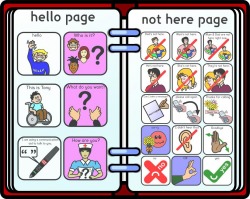
Being able to talk on the telephone was one of the most popular answers to a survey of augmented communicators, in which I was involved, conducted by Liberator Ltd in the 1990s. Almost every response on the 'Now we are talking' video makes reference to the telephone. Being excluded from using such a common everyday system then is one thing that marks a person out as disabled. Making the telephone accessible through technology is therefore both important and inclusive.
Providing a TPA that remains constantly by the phone is an example of a TRV (Temporarily Restricted Vocabulary). A TRV (pronounced 'trev') provides a subset of a person's entire vocabulary only. It is used in circumstances where a subset might be extremey useful. Having only a subset of vocabulary means that there is are fewer items to have to search and some items can be grouped into small phrases which will speed communication.
Providing common responses and questions for talking on the telephone is an example of a TRV. Each page or pair of pages in the V-Album could address a specific part of the telephone conversation. For example, the first page(s) would address the 'greeting' stage; the next finding out who is on the line. A later page(s) might address a response to a caller seeking a person in the house who is not available (as illustrated). One technique is to have two TPAs available by the phone: one for making calls and another for receiving calls. Obviously, they need to be instantly identifiable! Altenatively the two can be combined in one album; perhaps turning the album over and starting from the opposite end.
Try to make all vocabulary choices as generic as possible. Less specific vocabulary is applicable in more circumstances. Not, 'oh Frank has gone to the supermarket' (even though Frank may go to the supermarket quite often) but, rather, 'He is not here' and 'can I take a message', 'please call back', etc.
There should always be an emergency phone page (not shown) such that, in the case of an emergency, the Learner can contact someone for assistance.
Providing a TPA that remains constantly by the phone is an example of a TRV (Temporarily Restricted Vocabulary). A TRV (pronounced 'trev') provides a subset of a person's entire vocabulary only. It is used in circumstances where a subset might be extremey useful. Having only a subset of vocabulary means that there is are fewer items to have to search and some items can be grouped into small phrases which will speed communication.
Providing common responses and questions for talking on the telephone is an example of a TRV. Each page or pair of pages in the V-Album could address a specific part of the telephone conversation. For example, the first page(s) would address the 'greeting' stage; the next finding out who is on the line. A later page(s) might address a response to a caller seeking a person in the house who is not available (as illustrated). One technique is to have two TPAs available by the phone: one for making calls and another for receiving calls. Obviously, they need to be instantly identifiable! Altenatively the two can be combined in one album; perhaps turning the album over and starting from the opposite end.
Try to make all vocabulary choices as generic as possible. Less specific vocabulary is applicable in more circumstances. Not, 'oh Frank has gone to the supermarket' (even though Frank may go to the supermarket quite often) but, rather, 'He is not here' and 'can I take a message', 'please call back', etc.
There should always be an emergency phone page (not shown) such that, in the case of an emergency, the Learner can contact someone for assistance.
35. Phone Directory / Address Book
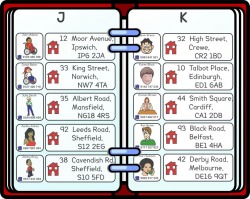
Most households keep an a phone/address book, typically, near the phone. Such a system can be created within Voice Ink such that phone numbers and addresses can be read out loud when accessed. The album could be set up with the details of a separate person on each each page or several people although the recording would have to read all on the page out in one go..
Note: Names, addresses, and phone numbers in illustration are fictional!
36. Reduce behaviours that Staff may find challenging
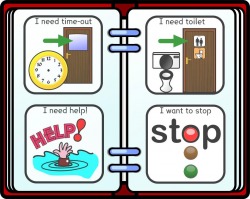
Many 'problem behaviours' are caused by the frustration felt by individuals because of an inability to communicate specific needs. Creating a TPA to address the specific needs of an individual Learner can result in a reduction in those behaviours that staff may find challenging and, as such, is well worth the the time and effort invested. There is no one generic template that will suit all Learners. Thus, the illustration is NOT to be taken as a 'definitive' approach. It simply illustrates just a selection of possible messages that may address specific needs of some Learners. One message would appear on each page.
When put into use, such systems require a specific school 'Policy and Procedure' such that all staff are in no doubt as to the correct procedure to follow when the album is accessed. Failing to follow procedure or simply ignoring a request may lead to further behaviours that staff find challenging.
There needs to be careful consideration given to the number of times that an individual is permitted to request 'time-out' (for example). Is the
Learner going to be allowed to leave the room at any and every opportunity or is there a set limit? How is that limit conveyed to the Learner in a way that is is comprehensible? What happens when the limit is reached and the Learner still requests 'time-out'? These sort of scenarios need careful consideration and detailing in the Policy and Procedure document. It is beyond the scope of this page of the web-site to address such issues.
When put into use, such systems require a specific school 'Policy and Procedure' such that all staff are in no doubt as to the correct procedure to follow when the album is accessed. Failing to follow procedure or simply ignoring a request may lead to further behaviours that staff find challenging.
There needs to be careful consideration given to the number of times that an individual is permitted to request 'time-out' (for example). Is the
Learner going to be allowed to leave the room at any and every opportunity or is there a set limit? How is that limit conveyed to the Learner in a way that is is comprehensible? What happens when the limit is reached and the Learner still requests 'time-out'? These sort of scenarios need careful consideration and detailing in the Policy and Procedure document. It is beyond the scope of this page of the web-site to address such issues.
37. Commanding Communication
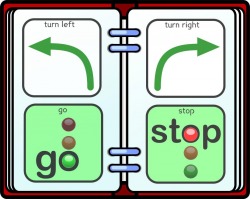
There are a number of toys available in the marketplace that are operated by voice command. A quick search of the internet will reveal several such toys. As the TPA will issue the same command completely consistently over and over again, it is an ideal way of communicating with such toys. Therefore, communicating can also be learning symbols and playing at one and the same time!
The same technique can be used to control 'robotic staff':
- Place items of furniture around the room;
- Put a reward on one of the items of furniture;
- Blindfold a member of staff;
- Task a Learner to direct the staff member to the reward and bring it to him/her.
- If the staff member bumps into an item of furniture the game is lost!
Can the Learner direct a member of staff to gain the reward? The reward should be something that the Learner would like.
38. Pet Talk
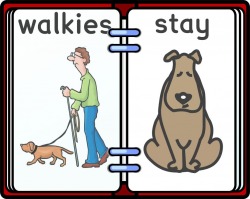
We all talk to our pets and we all claim that they understand our every command! It is important to, that the individual with a significant speech impairment can talk to his/her pet as well. The great thing about using a TPA to talk to a pet is that it delivers the message the same way every time. The pet has a real chance of recognising and responding.
39. Support MSR and OOR
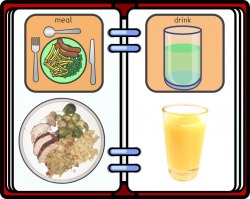
A TPA can used to support an Objects Of Reference sheme. Images of the POLEs (Person, Object, Locations, Events) which are represented by the objects can be placed together on a page with its symbol. When an Object is established witha specific Learner after being in use for some time, the POLE can be spoken with the V-Pen immediately after the object presentation. Ideally, the Learner will be assisted to use the TPA to touch the appropriate page and say the name of the POLE before travelling to the destination or changing topics within the classroom. Thus the Learner is assisted to associate both Object and symbol with the POLE through separate modalities.
However, a word of warning, this may be a step too soon and too far for some Learners. Ensure that the Learner object/pole association has a chance to develop before introducing such a strategy.
However, a word of warning, this may be a step too soon and too far for some Learners. Ensure that the Learner object/pole association has a chance to develop before introducing such a strategy.
40. Literacy Support
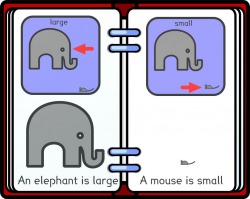
There are many ways to use a TPA to support emergent literacy some are outlined below:
- my book of opposites (illustrated);
- a is for apple, b is for book ...;
- Amy's Annual of All Actual Aliterations;
- My story in pictures and words;
- Speaking Stories;
- phonic blends (different blend illustrated on each page);
- ...
41. Numeracy Support
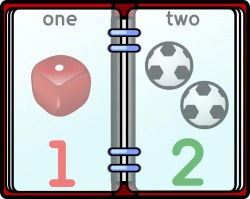
TPAs can be used to support the development of number skills in many ways. It is possible to start simply with such things as:
- number recognition;
- counting to ten (forwards)
- counting from ten (backwards);
- number bonds;
- multiplication tables;
- monetary matters (see below);
- aspects of time ...
42. How many items?
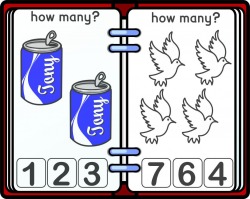
By providing a choices of answers, the TPA can be used as a form of mathematical puzzle book. For example, in the illustration, on the right hand page, there are 4 birds. The Learner is asked to count the birds and choose a correct response from the three boxes at the bottom of the page. The User can point one out to member of staff and then use the button to check his/her answer. "Did you get it right? There are four birds on this page."
43. Money Matters
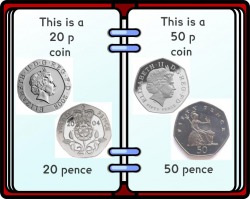
Where the recognition of money is problematic, a TPA can be produced that deatils the coins and the notes such that a Learner can use it for both practice and in real life to pay the correct amount for goods for example.
As in the example above, the Learner can be tasked to count the amount of money on a page and choose from a selection of possible answers or, a sum of money can be placed on a table top and the Learner tasked to use his/her TPA to provide the correct amount.
44. Talking Price List
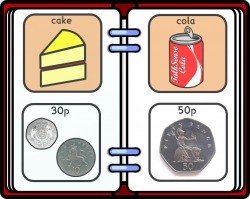
A talking price list, perhaps for display in the school shop, can be a very inclusive project. It could be used by those working behind the counter to look up and announce prices to customers or it could be available to customers themselves to check prices.
45. Time for Studies
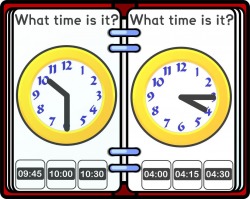
There are a number of ways to set up a TPA to learn aspects of time. It could be arranged, as illustrated, with an analogue symbol and a choice of three digital times. The recorded message would confirm the correct answer such that the Learner could check his/her own skills.
46. Special Greetings Cards
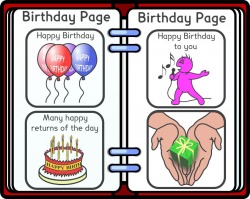
It is possible to set up each page with Special Greetings for friends at Special Times. This album could be kept in the classroom and produced for use when it is someone's birthday, or they have achieved something special, for example.
The birthday page may wish a friend a happy birthday as well as providing a means to sing 'happy birthday'.
Pages in this form of V-Album may be used for such things as:
- Happy Birthday;
- Congratulations;
- Well Done;
- Thank You;
- Welcome Back;
- Sorry;
- ...
The birthday page may wish a friend a happy birthday as well as providing a means to sing 'happy birthday'.
Pages in this form of V-Album may be used for such things as:
- Happy Birthday;
- Congratulations;
- Well Done;
- Thank You;
- Welcome Back;
- Sorry;
- ...
47. Who do you think you are? Talking Family Tree
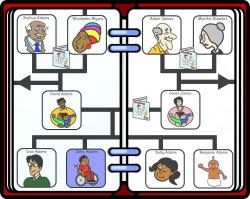
A sense of who we are and how we got here is important to us all. Making such information inclusive to all Learners is also important. A TPA can be constructed to provide a personal record of family history for a Learner such that s/he can tell others about past relations.
One page would set out the entire tree, while others would only details a single member so that the Learner could name them and say something about them.
Accessing a family picture could say the name of the family member and their date of birth. Touching the wedding card might speak out the wedding details between the various family members. Etc.
48. Learner Information Handbook
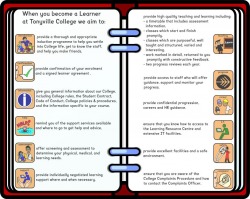
Most Special Schools and Colleges proce a handbook for their Learners. The handbook contains the all information that they need to know about school or college life. Creating a V-Album version provides access to a copy that talks and is therefore more inclusive. As such a document will likely contain a fair amount of text, a TPA will probably need to be produced with a single set of pages detailing all the rules and then the next individual pages illustraing and speaking one item of information each..
49. Talking TV Guide
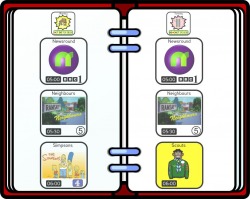
The way the TPA illustrated has been set up is a daily guide to the favourite TV programs a particular Learner is permitted to watch. While, on the Monday, he is permitted to watch the Simpsons until 6:30, Tuesday's TV timetable reminds him that he must get ready for scouts at 6pm after watching neighbours. There could also be a reminder to do homework afer Simpsons on Monday!
There are a considerable number of ways that a TPA may be arranged as a TV guide. Each double page spread could detail a particular section of a day's viewing across a number of channels. with the spoken message addressing one particular item of interest. Entries should not be specific: For example, do not enter the name of a film but merely indicate there is a film on at a given time on a particular channel. The time range should reflect the times that the individual typically views the TV. This may be different on different days: for example, at the weekend, a greater flexibility may be allowed.
There are a considerable number of ways that a TPA may be arranged as a TV guide. Each double page spread could detail a particular section of a day's viewing across a number of channels. with the spoken message addressing one particular item of interest. Entries should not be specific: For example, do not enter the name of a film but merely indicate there is a film on at a given time on a particular channel. The time range should reflect the times that the individual typically views the TV. This may be different on different days: for example, at the weekend, a greater flexibility may be allowed.
50. Talking Check List
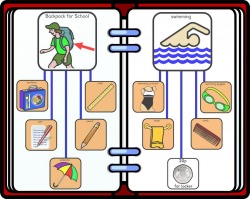
Some pepole need a graphic reminder of the things that they need to take with them for a particular activity. I know, at times, I also could use such a system! For example, there could be individual page reminders for the things that I need to take with me when I go:
- to school;
- swimming;
- out to play.
There could also be reminders for 'things that I need to do every morning when I get out of bed', 'things that I need to do when I ...'. Such 'check lists' are extremely useful for those with Alzheimer's disease and other conditions in which loss of memory is a feature.
- to school;
- swimming;
- out to play.
There could also be reminders for 'things that I need to do every morning when I get out of bed', 'things that I need to do when I ...'. Such 'check lists' are extremely useful for those with Alzheimer's disease and other conditions in which loss of memory is a feature.
51. Talking Reminder

52. Speaking of Surveys

53. Text with Questions

54. Perfect Presentations

55. Talking Reviews

56. Merit Awards

57. Short Term Speech Loss

58. Memory Cells

The creative use of memory cells within a V-Album.
Page Under Construction: Apologies
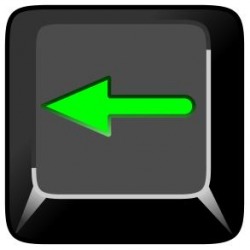
Return to Home Page
Please click the symbol to return to the home page
